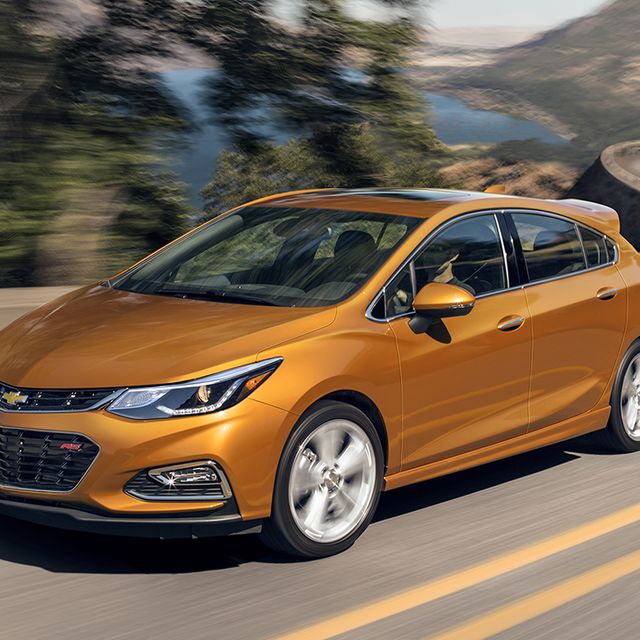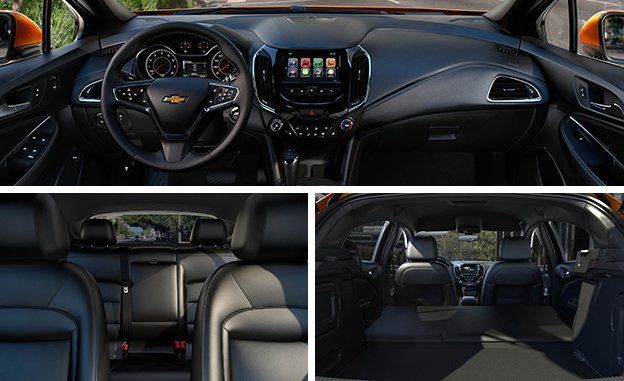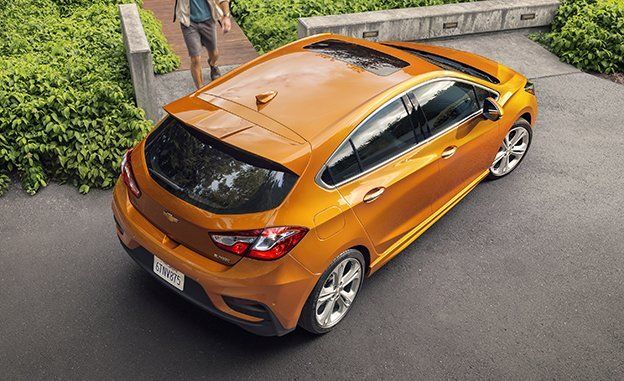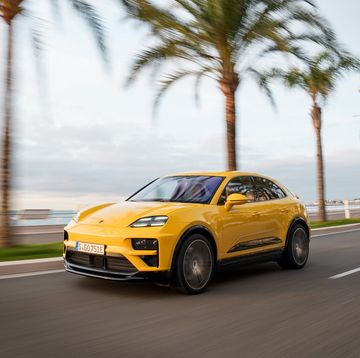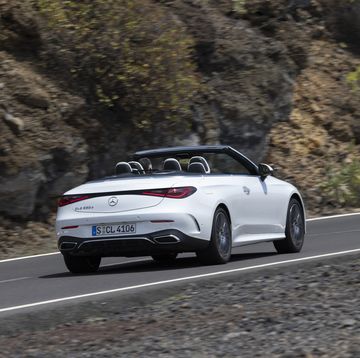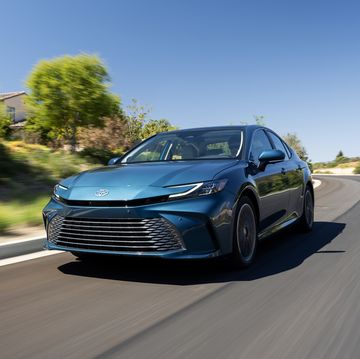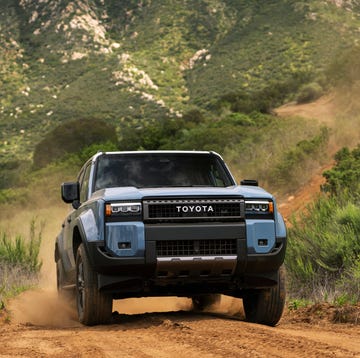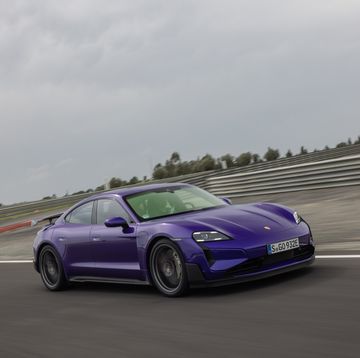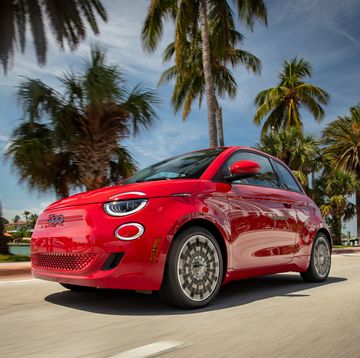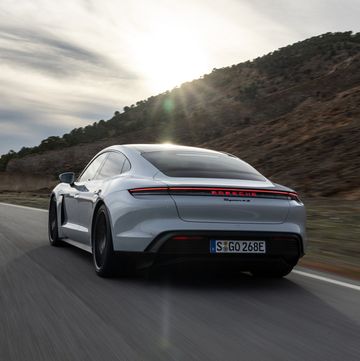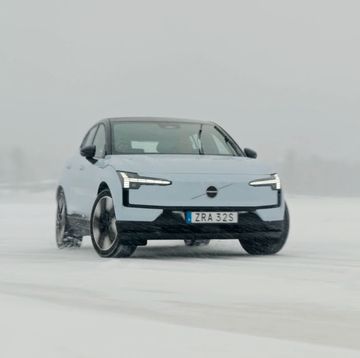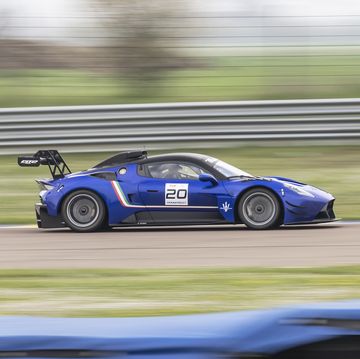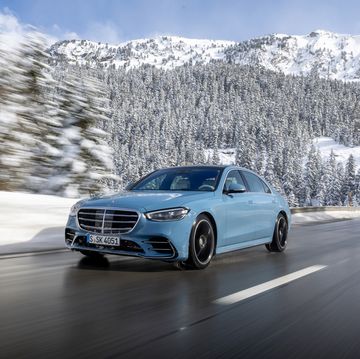Our multiple encounters with Chevrolet’s second-generation Cruze sedan have been entirely cordial. It placed third in a recent five-car comparison test, in which the modest compact pleased us with its quiet cabin and good looks, as well as its overall comfort. We ranked it ahead of the Hyundai Elantra and the Nissan Sentra in that test but found it less compelling than the Honda Civic or the Mazda 3. Essentially, it snags the middle-of-the-pack praise we once reserved for the solid-goods Corolla, before that Toyota took a lazy turn toward apathy in recent years. Hardly exciting stuff, but for 2017 the Cruze’s story is somewhat caffeinated by the addition of a four-door hatchback model.
Try Decaf
The hatch answers the call for a more useful Cruze variant here in the U.S., giving Chevrolet a shot at the growing interest in compact hatchbacks. (The previous-generation Cruze was available as a hatch elsewhere in the world.) At Ford, 40 percent of Focus sales in 2015 were the hatchback model, and Chevrolet has never stopped watching its crosstown rival (and vice versa). Unlike Ford, however, General Motors has not seen fit to bring us a hot hatch like those it offers in Europe, and to Chevy, the letters RS denote nothing more than an option package containing wheel and appearance upgrades. The lack of aspiration beyond practicality is evident in the Chevy’s suspension tuning, steering ratio, wheel sizes, and styling forward of the back doors, all being more or less identical to those of the refined but decidedly unsporty sedan.
The liftback model at least looks more interesting. The roof sweeps down more aggressively to meet the steeply raked rear window, and the entire caboose is 8.4 inches stubbier than the sedan’s, lending the hatch a chunky, forward-leaning appearance. The only bad angle is the dead-on rear view, where the dimensional tweaks and sloped rear end have a flattening effect that, to our eyes, makes its butt look too pancaked.
The priority placed on styling results in a smallish hatch opening set somewhat high off the ground, situated above a tall rear bumper and squeezed between the car’s haunches. Those who remember the short-lived Saturn (née Opel) Astra will recognize the approach here, sacrificing practicality for appearance. The more squared-off Volkswagen Golf leads the class for size and ease of use, but the Cruze’s hatch opening doesn’t seem any smaller or higher than, say, that of the Mazda 3. Cargo space behind the rear seats is 23 cubic feet, three cubes more than is available in the Ford and the Mazda. There are 47 cubes in the Chevy with the back seats folded, which matches Mazda and beats Ford by two. When lowered, the rear-seat backrests lie nearly flat and leave only a small lip between the surface they create and the flat load floor. (For its part, the practical Golf measures in at 23 cubic feet with its seats up and a whopping 53 with its seats down.)
Less Noise in the Trunk
We are fans of the hatchback body style in general, and while the Cruze may not claim best-in-class cargo volumes, it’s still appreciably more practical than the sedan. The transformation doesn’t come at the expense of the sedan’s admirably quiet demeanor, either. Chevrolet engineered sound-deadening measures into the cargo area, aiming to keep the hatchback as serene at speed as the sedan, despite losing the bulkhead that divides the back seat from the trunk. Similar attention was paid to tamping down noise generated by the available rear spoiler. The result is a quiet cabin with little road sizzle audible through the cargo floor and minimal cabin booming over bumps.
As in the sedan, the hatchback driving experience is tuned for minimal fuss. The steering is low on feedback but nicely weighted for correction-free, straight-ahead tracking on the highway. The chassis exhibits similar competence, masterfully smoothing out road imperfections and minimizing body roll in corners—but doing little to encourage the driver to have fun. Two suspension setups are offered: The entry-level LT hatchback comes with a basic front-strut/rear-torsion-beam arrangement, while stepping up to Premier trim adds a Watt’s linkage to the rear axle for more precise wheel control. These arrangements don’t feel substantially different, and we found that wheel size plays a more critical role in the Cruze’s ride quality. The base 16-inch rims return a creamy compliance over most road imperfections and low tire noise, while the available 18-inch wheels on the Premier trim add some flintiness and a subdued but more-evident hum at highway speeds.
The two Cruzes share a 153-hp 1.4-liter turbocharged inline-four paired with either a six-speed manual transmission or a six-speed automatic. (A diesel option, along with a nine-speed automatic, will arrive later.) As in the sedan, this engine is smooth if uninspiring, and its noises are well suppressed. The automatic transmission is smoother still and shifts smartly. The sole method for manually selecting gears with the automatic is by way of a cheesy thumb switch on the shift lever—there are no paddles, nor even a fore-and-aft shifter gate. We didn’t have the chance to sample the six-speed manual transmission on our drive, but based on our experience with the three-pedal setup in the sedan, it can frustrate with its tall, widely spaced gear ratios and shifter feel that is more workmanlike than sporty. Chevrolet also has not addressed the oddly placed brake pedal, which, as we’ve noted in previous Cruze reviews, sits higher off of the floor relative to the throttle and can snag the driver’s shoe when switching from one pedal to the other.
Trimming the Trims
Hatchback buyers tend to spend more on their compacts than their sedan-favoring counterparts, so for this body style Chevy banished the sedan’s base L and LS trim levels from the hatch’s lineup. That leaves only the mid-level LT and the range-topping Premier trims, which start at $22,115 and $24,820. The LT comes with a stick shift, a quick-to-respond 7.0-inch MyLink touchscreen with Apple CarPlay and Android Auto integration, 16-inch wheels, SiriusXM satellite radio, a 4G LTE data connection with Wi-Fi hotspot, and LED running lights. Drop another $680 for the automatic, and you unlock a host of option packages that offer goodies such as a sunroof, a larger 8.0-inch touchscreen, a Bose audio system, and more. Or step up to the $24,820 Premier to gain 17-inch wheels, leather seats (heated in front), a heated steering wheel, a power driver’s seat, keyless ignition, and a proximity key as standard. For either model, the price premium over an equivalent sedan is nearly negligible, tallying $1090 for the LT and only $470 for the Premier.
Although they weigh about the same, the sedan and hatchback aerodynamics differ a little, so the hatchback’s EPA fuel-economy estimates are marginally lower. The LT manual hatchback is EPA-rated at 28 mpg in the city and 39 on the highway—1 mpg lower on the highway than an equivalent sedan—while the automatic’s 29/38 mpg also drops 1 mpg on the highway relative to its sedan cousin. The Premier, which is slightly heavier and comes only with an automatic transmission, nets 28/37 mpg scores that are 1 mpg lower in the city and 2 mpg lower on the highway than the Premier sedan’s EPA numbers.
Chevrolet says the Cruze hatchback chases after slightly older customers compared with the sedan and that they’re more likely to be male. The target buyer is said to be in his 30s and active, probably has a dog, or at least requires space for hauling anything from camping gear to music equipment. We don’t doubt that the Cruze fulfills this hypothetical hipster’s needs—as do many alternatives offering more drama or practicality. The Cruze, on the other hand, is undeniably competent yet lacks much personality. It could appeal to customers clever enough to skip crossovers for a practical small hatchback, so long as they’re not much interested in one served hot.
Specifications

